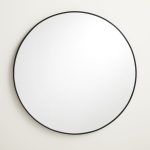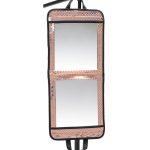What The Mirror Said By Lucille Clifton: Unlock The Power Within And Embrace Your True Reflection!
What The Mirror Said By Lucille Clifton: A Reflection of Identity and Self-Acceptance
The Power of Self-Reflection
Mirror, mirror on the wall, who is the fairest of them all? This famous question from the fairy tale Snow White highlights the age-old fascination with mirrors and their ability to reflect our true selves. In the enchanting poem what the mirror said by Lucille Clifton, the mirror becomes not just a tool of vanity, but a voice of empowerment and self-discovery. Through Clifton’s poetic verses, readers are invited to ponder the deeper meanings behind their reflections and embrace their unique identities.
1 Picture Gallery: What The Mirror Said By Lucille Clifton: Unlock The Power Within And Embrace Your True Reflection!

Unveiling the Poet: Lucille Clifton
Lucille Clifton, an influential American poet, uses her words to explore the complexities of race, gender, and self-acceptance. Born in New York in 1936, Clifton drew inspiration from her African-American heritage and the struggles she faced as a woman of color in a predominantly white society. Her works often delve into themes of identity, body positivity, and the power of language. what the mirror said is just one of Clifton’s many thought-provoking poems that continue to resonate with readers today.

Image Source: teachingheartfirepoetry.com
What Does the Mirror Say?
In what the mirror said, Clifton tackles the concept of self-perception and the societal pressures that influence it. The mirror, personified as a living entity, offers a raw and honest reflection of the individual standing before it. It speaks of the harsh realities faced by the subject, highlighting flaws and imperfections that may be overlooked or denied by society. By confronting these truths, the mirror serves as a catalyst for self-acceptance and the celebration of one’s unique beauty.
Who Should Read what the mirror said?
Image Source: twimg.com
what the mirror said is a poem that speaks to anyone who has ever questioned their worth or struggled with self-image. This powerful piece resonates with individuals from all walks of life and encourages them to embrace their true selves, regardless of societal standards. Whether you are a teenager grappling with body image issues or an adult navigating the complexities of identity, Clifton’s poem offers solace and inspiration to readers of all ages.
When Was what the mirror said Written?
Image Source: twimg.com
what the mirror said was first published in 1980 as part of Lucille Clifton’s poetry collection titled Two-Headed Woman. This collection, which delves into themes of womanhood, identity, and self-acceptance, cemented Clifton’s place in the literary world. Since its publication, what the mirror said has captivated audiences with its timeless message and lyrical beauty.
Where Can You Find what the mirror said?
Lucille Clifton’s poem what the mirror said can be found in various anthologies of her work, as well as online platforms dedicated to poetry. Additionally, the poem is often studied in literature courses and discussed in academic circles, as it offers profound insights into the human experience. Whether in a physical book or on a digital page, what the mirror said is readily accessible to those seeking personal reflection and introspection.
Why Is what the mirror said Relevant Today?
In a world obsessed with appearances and societal expectations, what the mirror said remains as relevant today as it was when it was first written. Clifton’s poem serves as a poignant reminder that true beauty lies in self-acceptance and embracing one’s unique qualities. In an era driven by social media filters and photoshopped images, this poem encourages readers to look beyond the superficial and find strength in their authentic selves.
How Does what the mirror said Inspire Self-Acceptance?
Clifton’s poem what the mirror said inspires self-acceptance by challenging conventional notions of beauty and perfection. It urges readers to confront their insecurities head-on, recognizing that true beauty is not confined to society’s narrow standards. By embracing their individuality and celebrating their flaws, readers can find liberation and empowerment in the face of societal pressures. Through its lyrical verses, what the mirror said sparks a journey of self-discovery and self-love.
The Benefits and Drawbacks of what the mirror said
Advantages:
1. Boosts Self-Confidence: what the mirror said encourages readers to embrace their unique qualities and find confidence in their own skin. It serves as a reminder that true beauty comes from within.
2. Promotes Body Positivity: By challenging societal beauty standards, Clifton’s poem promotes body positivity and self-acceptance, fostering a healthier relationship with one’s own body.
3. Inspires Personal Growth: what the mirror said inspires readers to embark on a journey of self-discovery and introspection, fostering personal growth and a deeper understanding of oneself.
4. Offers Emotional Support: Clifton’s words provide solace and comfort to individuals struggling with self-image issues, offering a sense of camaraderie and understanding.
5. Encourages Empathy: The poem’s themes of self-acceptance and embracing individuality promote empathy, as readers learn to see beyond surface-level judgments and appreciate the beauty in others.
Disadvantages:
1. Potential Emotional Impact: The raw and honest nature of what the mirror said may evoke intense emotions in readers, especially those who have experienced deep-rooted insecurities.
2. Challenging Societal Norms: Embracing one’s unique qualities and challenging societal norms can be a daunting task, requiring significant personal growth and resilience.
3. Vulnerability: The poem encourages readers to confront their vulnerabilities, which can be an uncomfortable and challenging process for some individuals.
4. Subjectivity: Interpretations of what the mirror said may vary, as each reader brings their own experiences and perspectives to the poem, potentially leading to differing opinions and discussions.
5. Requires Self-Reflection: To fully benefit from what the mirror said, readers must engage in introspection and self-reflection, which may require time and effort.
Frequently Asked Questions about what the mirror said
1. Does what the mirror said have a specific meaning?
A: The beauty of what the mirror said lies in its open-ended nature, allowing readers to interpret its meaning based on their personal experiences. It invites introspection and self-reflection, encouraging readers to find their own significance within the poem’s verses.
2. Can men relate to what the mirror said?
A: Absolutely. Although what the mirror said delves into themes often associated with women, such as body image and societal expectations, its underlying message of self-acceptance and embracing one’s unique identity resonates with individuals of all genders.
3. How does what the mirror said challenge societal beauty standards?
A: Clifton’s poem challenges societal beauty standards by emphasizing the importance of self-acceptance and celebrating individuality. It encourages readers to define beauty on their own terms, rather than conforming to society’s often unrealistic and damaging expectations.
4. Is what the mirror said suitable for teenagers?
A: Yes, what the mirror said can be particularly impactful for teenagers who are navigating the complexities of self-image and identity. Its message of self-acceptance and embracing one’s unique qualities can serve as a guiding light during this transformative phase of life.
5. How can I incorporate the lessons from what the mirror said into my daily life?
A: To incorporate the lessons from what the mirror said into your daily life, try practicing self-compassion, celebrating your accomplishments, and embracing your imperfections. Surround yourself with positive influences and engage in self-reflection regularly to foster personal growth and self-acceptance.
In Conclusion: Embrace Your Reflection, Embrace Yourself
what the mirror said by Lucille Clifton serves as a powerful reminder that true beauty lies in self-acceptance and embracing one’s unique identity. Through her poetic words, Clifton encourages readers to look beyond societal expectations and celebrate their flaws and imperfections. By embracing the lessons of this poem, individuals can embark on a journey of self-discovery, fostering personal growth, and a deeper appreciation for their authentic selves. So, the next time you gaze into the mirror, remember Clifton’s empowering words and embrace the reflection that stares back at you – for it is a reflection of your true, beautiful self.
Final Remarks: It is important to note that the interpretation of what the mirror said may vary among readers, and each individual will resonate with different aspects of the poem based on their personal experiences. The power of Clifton’s words lies in their ability to spark conversations, introspection, and personal growth. May this poem continue to inspire and empower readers for generations to come.
This post topic: Mirror



